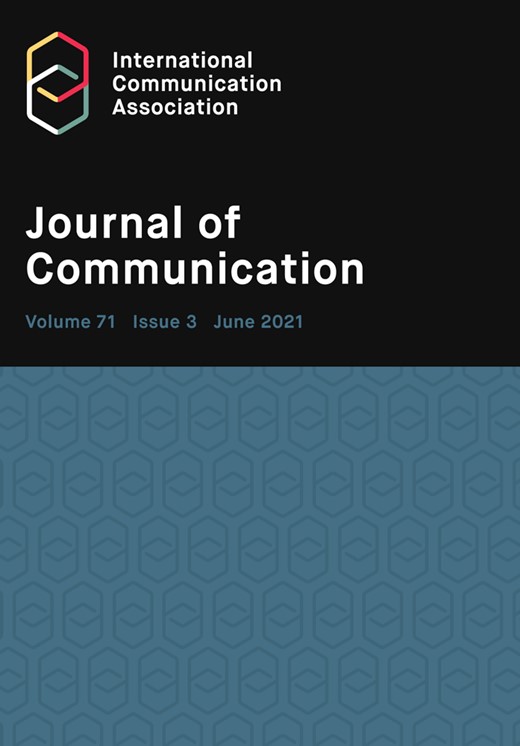-
Views
-
Cite
Cite
Miriam Brinberg, Nilam Ram, Do New Romantic Couples Use More Similar Language Over Time? Evidence from Intensive Longitudinal Text Messages, Journal of Communication, Volume 71, Issue 3, June 2021, Pages 454–477, https://doi.org/10.1093/joc/jqab012
Close - Share Icon Share
Abstract
The digital text traces left by computer-mediated communication (CMC) provide a new opportunity to test theories of relational processes that were originally developed through observation of face-to-face interactions. Communication accommodation theory, for example, suggests that conversation partners’ verbal (and non-verbal) behaviors become more similar as relationships develop. Using a corpus of 1+ million text messages that 41 college-age romantic couples sent to each other during their first year of dating, this study examines how linguistic alignment of new romantic couples’ CMC changes during relationship formation. Results from nonlinear growth models indicate that three aspects of daily linguistic alignment (syntactic—language style matching, semantic—latent semantic analysis, overall—cosine similarity) all exhibit exponential growth to an asymptote as romantic relationships form. Beyond providing empirical support that communication accommodation theory also applies in romantic partners’ CMC, this study demonstrates how relational processes can be examined using digital trace data.





